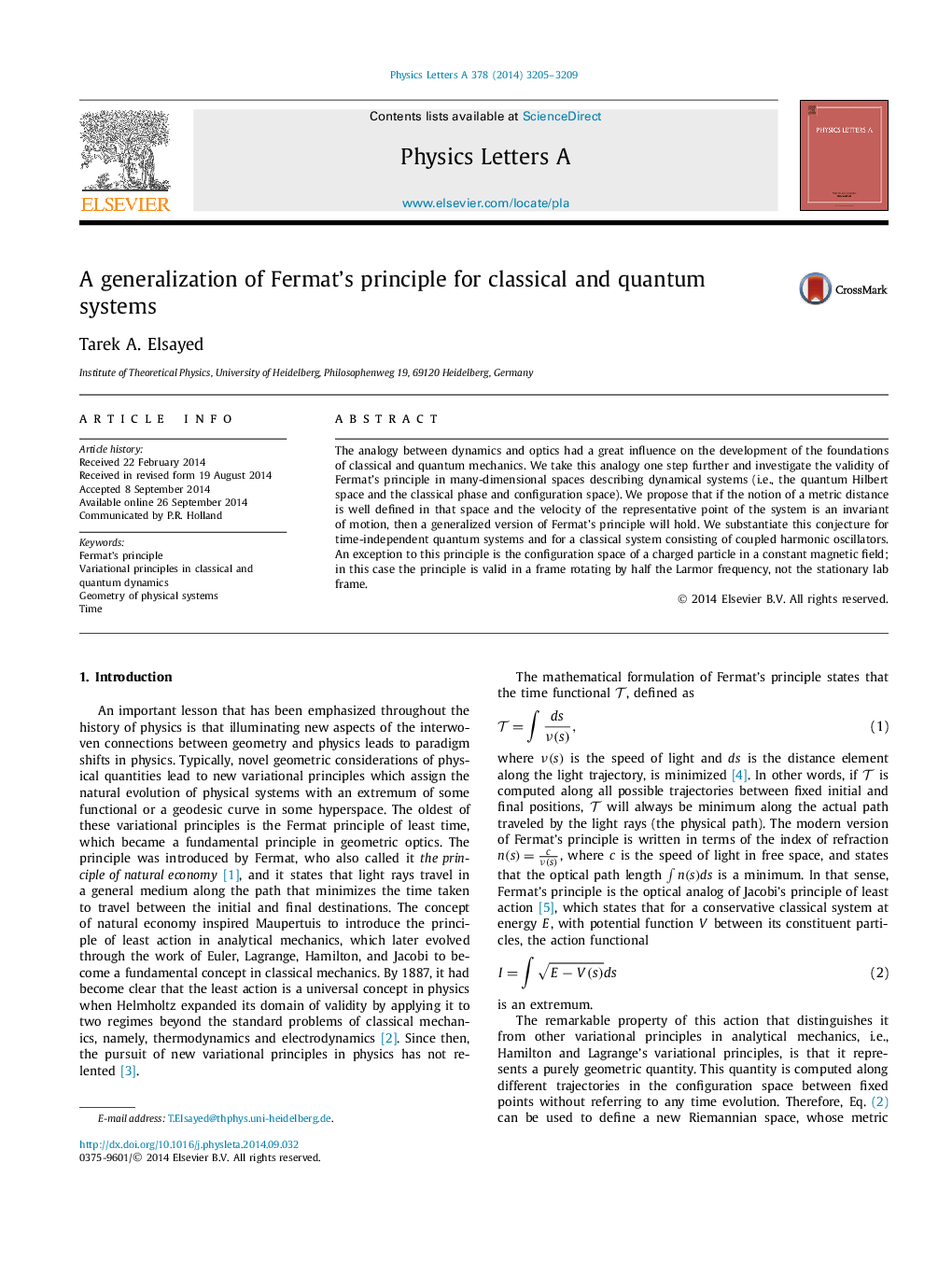| Article ID | Journal | Published Year | Pages | File Type |
|---|---|---|---|---|
| 1859744 | Physics Letters A | 2014 | 5 Pages |
•Introduces a generalized Fermat principle for many-dimensional dynamical systems.•Deals with the time taken by the system between given initial and final states.•Proposes that if the speed of the system point is constant, the time is an extremum.•Justified for the phase space of harmonic oscillators and the projective Hilbert space.•A counterexample for the motion of a charge in a magnetic field is discussed.
The analogy between dynamics and optics had a great influence on the development of the foundations of classical and quantum mechanics. We take this analogy one step further and investigate the validity of Fermat's principle in many-dimensional spaces describing dynamical systems (i.e., the quantum Hilbert space and the classical phase and configuration space). We propose that if the notion of a metric distance is well defined in that space and the velocity of the representative point of the system is an invariant of motion, then a generalized version of Fermat's principle will hold. We substantiate this conjecture for time-independent quantum systems and for a classical system consisting of coupled harmonic oscillators. An exception to this principle is the configuration space of a charged particle in a constant magnetic field; in this case the principle is valid in a frame rotating by half the Larmor frequency, not the stationary lab frame.
